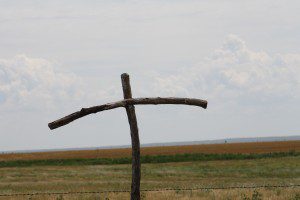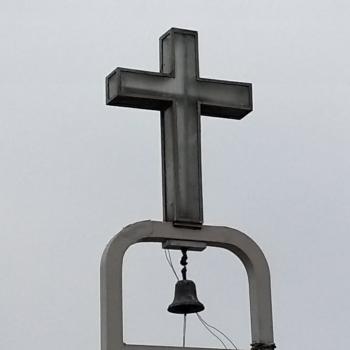
Why did Jesus die on the cross? As a kid, I was taught a sort of clinical answer. The cross represented an equation of supernatural mathematics: Jesus zeroed out the infinite balance of human sin. Now, those who believe can access the superabundance of his merits and do not have to face the hellish eternal consequences of sin. Jesus died on the cross so that we don’t have to.
That understanding is true enough in its way, but it’s not the fullness of the gospel. Because in fact, Jesus calls us not to keep the cross at arms’ length, but to join him on the cross through discipleship and worship. The cross is an invitation.
Jesus calls anyone who wants to follow him to “take up their cross” (Matthew 16:24). Who knows what his disciples heard with that pitch? The cross was an instrument of torture, a sign of Rome’s power. The cross projected its message with brutal clarity: Don’t mess with Rome. The great Roman orator Cicero said crucifixion was so terrible, Roman citizens shouldn’t even hear of it. And while Israel did not practice crucifixion as a form of capital punishment, the bodies of executed criminals were sometimes displayed by hanging from a tree, though the Law called for them to be pulled down by evening and buried, for “cursed is everyone who hangs on a tree” (Joshua 10; Deuteronomy 21:22-23). And here’s Jesus, speaking of the cross with prophetic foresight, calling the twelve and all who will come after to join him on the renunciative way of the cross. “Those who find their life will lose it,” he says in Matthew 10:39, “and those who lose their life for my sake will find it.”
Jesus certainly isn’t preaching a message that’s easy and comfortable. He makes no promises that those who follow him will be sleek and strong, healthy and wealthy. He points to the cross. To follow Jesus is to take up our cross, which means being willing to go with him wherever he goes, even into places of hardship, suffering, uncertainty, and confusion. “Where I am, there will my servant be also” (John 12:26). But the cross is also a sign of God’s heart, God’s love that enters so fully into human life and history as to embrace even suffering and death. Discipleship means loving Jesus above all others and following him in his love of others beyond our family-and-friends comfort zone. Thomas understood discipleship better than he knew when he said, “Let us also go, that we may die with him” (John 11:16).
The cross is not something we can understand simply or wrap up neatly. Whenever we speak of the cross, we’re touching on great mystery. Often when we try to explain the cross, we end up explaining it away. We domesticate the cross by turning it into this little intellectual formula, when in fact the cross is the ultimate disrupter of our formulas. The cross shatters our simplistic understandings of who God is. It’s the kind of mystery that we can never fully wrap our heads around. We can only be embraced by it.
We plunge into the mystery of the cross in worship. We die with Christ in baptism (Romans 6:3-7). We proclaim his death every time we come to the Lord’s table (1 Corinthians 11:26). Perhaps this is what Paul had in mind when he wrote: “I have been crucified with Christ; and it is no longer I who live, but it is Christ who lives in me” (Galatians 2:19-20). Worship opens the door into the incomprehensible depths of God’s mysterious love.
It’s a paradox of death-made-life that Jesus’ transformative and healing love is unleashed on the cross. That’s what he calls us to take up and embrace. Jesus died on the cross so that we could too.












